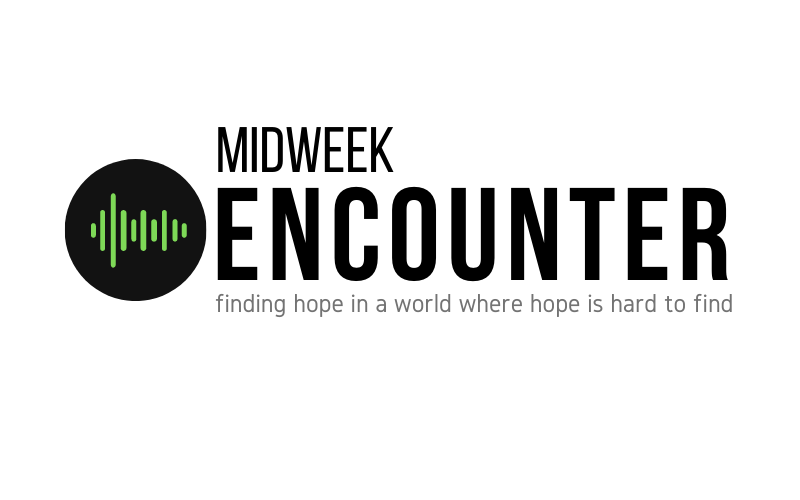
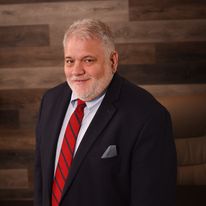


Exodus 24 -30, Leviticus 16
We are going to look at God’s house. We spent a lot of time and money in America on our homes. There are all kinds of magazines and TV shows and books devoted to home building and improvement. Even with all the time we put into them, most of us still have a list of changes we want to make and things we want to fix. For some of us the lists gets longer and longer as the years pass. Looking at our list and plans can say a lot about what matters to us.
We are going to look at the list of things that God wanted in His house. God obviously doesn’t need a physical building but He has a reason for wanting a place in which to dwell. Exodus 25:8, “Then have them make a sanctuary for me, and I will dwell among them.” The key word is dwell. The tabernacle was a visible sign of the presence of God with his people. When the people of God saw the tabernacle, they could say, “God with us.” The word tabernacle can be a verb or a noun and in essence God was saying I will tabernacle among them or I will tent (camp) among them.
God is telling Moses that the people need a physical reminder that He is with them. The need a place that will be full of details and activities that will teach them about God’s character and will and about how they can relate to Him. So God tells Moses to build a tent (tabernacle) in the middle of the camp. Specifically, the people of Israel are to build a courtyard, and in the courtyard a tent, and in the tent a compartment called the Most Holy Place. In that compartment they are to put a box called an ark.
God tells Moses in Exodus 25:2, “Tell the Israelites to bring me an offering. You are to receive the offering for me from each man whose heart prompts him to give.” Everybody can be part of making a place where they can meet with God, but it will be strictly voluntary. God gives the invitation, but the people must respond. This is true of us today as well. God invites us to places of intimacy with Him, but we have to hear His invitation and enter in.
The tabernacle was made of the finest materials available including a lot of gold and silver. We know that God does not need precious metals. They are no rarer to him than tin or bronze. But the use of these had specific significance.
If you’re a man and you’ve ever had a wife or girlfriend, you might know what it feels like to buy flowers for her. Why does one person spend a big chunk of cash on a dozen red roses? Is there anything strategic about a rose? Wouldn’t it be more practical to get her a minor appliance or something useful? The reason one person gives another a bouquet of roses is that the gift is a way of honoring the other person. It is a way of communicating value and paying homage. It is this kind of extravagance that cries out, “I love you!”
Look at Exodus 36:3-6 to see how the people responded, “3 They received from Moses all the offerings the Israelites had brought to carry out the work of constructing the sanctuary. And the people continued to bring freewill offerings morning after morning. 4 So all the skilled craftsmen who were doing all the work on the sanctuary left their work 5 and said to Moses, "The people are bringing more than enough for doing the work the LORD commanded to be done."
6 Then Moses gave an order and they sent this word throughout the camp: "No man or woman is to make anything else as an offering for the sanctuary." And so the people were restrained from bringing more, 7 because what they already had was more than enough to do all the work.”
Do you have hearts like that? Do you have a heart that overflows in response to God’s goodness? When was the last time you found yourself looking for ways to give to God’s work? 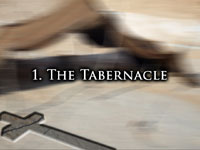 1. The Tabernacle
1. The Tabernacle
The placement of the tabernacle gives a visual picture of how God wants to be in the very center of our lives. God had his people arrange their lives, physically and spiritually, around the tabernacle. When they set up camp the tent of meeting was to be in the very center. Then the priest camped around the tent. Finally, all the tribes of Israel camped surrounding the tabernacle. The door of each tent was to be facing the tabernacle. The entire community was built the tabernacle which represented God’s presence in their midst. When they marched pieces of the tabernacle were carried in the middle of the congregation. This was a way of physically picturing that they were to be a community centered on God.
The presence of the tabernacle in the middle of the camp was to serve as an ever present reminder that God was with his people. Here’s a modern day example of how this works. Ever noticed how different you drive when you see a police car? Traffic can be going at a really good pace, those of us who are NASCAR fans are drafting and all of the sudden brake lights begin to flash. Everyone slows down. A law enforcement car has been spotted. The presence of this car reminds people that there is a speed limit and it would be wise to follow it.
The tabernacle has this same kind of effect on people. When they saw it they were reminded that God was with them, leading, guiding and watching. This impacted the way they related to God and each other. What if God were watching me in the work place? What if He were present on my school campus? What if God knew what was happening behind closed doors? What if God were with me every moment of every day? We need to live each moment in clear awareness that God is with us. This should have a powerful impact on all we do.
We are going to walk through this tabernacle this morning and I am going to make comments as we move quickly through this historic place. There is a lot that cannot be said in thirty minutes so we will hit some highlights and make some applications that apply to us today.
The tabernacle had a large outer courtyard that was 75 feet wide and 150 feet long – about half the size of a football field and not as wide. It was enclosed with wooden frames and brilliant curtains so that it could be torn down and transported. Much like a fenced in yard today, it offered a safe, quiet place for people to gather and meet with God. 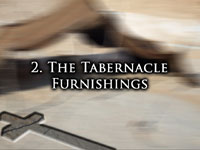 2. The Tabernacle Furnishings
2. The Tabernacle Furnishings
In the courtyard there were two objects. The first you would notice would be a bronze altar. Exodus 27:1—8 describes this altar. “ 1 "Build an altar of acacia wood, three cubits [a] high; it is to be square, five cubits long and five cubits wide. [b] 2 Make a horn at each of the four corners, so that the horns and the altar are of one piece, and overlay the altar with bronze. 3 Make all its utensils of bronze—its pots to remove the ashes, and its shovels, sprinkling bowls, meat forks and firepans.”
There was a horn on each side and animals would be tied to the horns and offered as a sacrifice. This altar is what the apostle Paul had in mind in Romans 12:1 when he writes, “Offer you bodies as living sacrifices. This picture would have been very clear in the mind of Jews. When an animal was to be sacrificed, it was tied to the horns that were on the corners of the altar. It didn’t have the option to say, “Well, I think I’m done now. I’m going to get up and leave.” It was tied to the altar and there was no way off the altar except death. Paul’s words are an expression of utter surrender and submission. Like the animal tied to the altar, we are bound to give our whole lives in sacrifice to God.
There were five offerings:
Burnt offerings: Complete sacrifice. Most other animal sacrifices were part of a meal. Only part of the animal was sacrificed. All of it was offered to God.
Grain offerings: Designated for the poor who couldn’t afford and animal for the burnt offering. God’s sacrificial system was designed for everyone, rich or poor.
Fellowship or Peace Offerings: These offerings were offered as expressions of intimacy to God. When someone received a blessing, they would bring a fellowship offering to honor God for his goodness. At times when someone wanted to just say, “God I love you,” they would bring what was called a freewill offering.
Sin and guilt offerings: These were offered as expressions of sorrow or repentance for wrong doing. When they were dealing with guilt and wanted to express sorrow to God, they brought an offering. When someone was aware of personal sin, he or she would give an offering.
These sacrifice offerings were offered up each morning and night.
Another item in the courtyard was a large laver or basin. The priests cleansed themselves before and after washing the sacrifice. Look with me at Exodus 30:17 – 20: “17 Then the LORD said to Moses, 18 "Make a bronze basin, with its bronze stand, for washing. Place it between the Tent of Meeting and the altar, and put water in it. 19 Aaron and his sons are to wash their hands and feet with water from it. 20 Whenever they enter the Tent of Meeting, they shall wash with water so that they will not die. Also, when they approach the altar to minister by presenting an offering made to the LORD by fire, 21 they shall wash their hands and feet so that they will not die”
This is a picture of being clean in the sight of God and what that means. Such cleansing was not just for the body, not just for the clothes, but especially for the conscience. This kind of basin was quite common in a Middle Eastern home. People would often enter someone’s home after traveling on hot dusty roads and feel the need to clean up. Offering someone this opportunity was a gracious act of hospitality.
Imagine what it would mean to be a priest in those days. They were filthy from butchering animals but this basin provided a way to be clean. It served as a metaphor for the people that they could be clean. We live in a world of unclean. We can often feel the grit and the grime of the world cling to our minds and souls. Yet God still offers cleansing, God offers purity of heart, even for the greatest of sinners. He offered to make us white as snow.
Let’s go inside the tabernacle itself. There were two chambers. There was an outer chamber called the Holy Place. In an ancient Near Easter home, there was a place where you could receive a guest and perhaps break bread. In the tabernacle there were three main pieces of furniture in the Holy Place, similar to common furnishings in the homes at that time: a lampstand, burning incense and fresh bread.
Lampstand: Exodus 25:31, "Make a lampstand of pure gold and hammer it out, base and shaft; its flowerlike cups, buds and blossoms shall be of one piece with it.” (Exodus 27:20 as well)
It was the job of the priest to keep it filled with olive oil so that the flame would never go out. It remained lit all through the night. Why did they do this? This in one part of the tabernacle that could be seen from the outside and the ever burning light was a little bit like leaving the porch light on to send a message that somebody’s home. Remember the commercials for Motel 6? They would always end by saying the same line: “We’ll leave the light on for you.”
God was saying to the priests, “Don’t let the lamp go out. I want all my people to know that when they’re confused, when they’re afraid, when they’re in the dark, I’ll leave the light on. I am always available day and night.” Some of you needed to hear that today. You needed to hear that God has left a light on for you.
Altar of Incense: Exodus 30: 1-10. In homes in the ancient Near East, people often burned incense to cover up the odor of people who did not bathe often, animals that lived in the house and the smell of animals that had been slaughtered and cooked for family meals. This imagery is used in the book of Revelation 5:8. We read there about the golden bowls full of incense. We are told these are the prayers of the saints, a sweet thing to God. Incense is a picture of a sweet aroma ascending to God. As God’s people, we must learn that our prayers are sweet to God and that they ascend like fragrant incense.
The (Table) Bread of Presence: Exodus 25:30. There was a table built of wood and covered with gold. The serving utensils also were made of gold. Every week the priests would bake twelve loaves of bread, one for each of the twelve tribes of Israel. “30 Put the bread of the Presence on this table to be before me at all times.”
Don’t you love the smell of fresh bread? It says somebody’s home and they have been preparing something for you. Literally this bread is called the bread of the presence or the bread of the face. It was an expression of the warm, fresh, sweet presence of God.
Breaking bread and sharing table fellowship with others was very important in Bible times. We tend to sit down for a meal with only people we know and like. In those days there was a deep meaning in sharing a meal and breaking bread. You were entering a new level of intimate friendship. This was a foreshadowing of the table that Jesus and his disciples gathered around when he broke the bread.
God still is present today. He shows up in new and fresh ways. He provides our daily bread and all we need. What we need to do is learn to see His face. We need to look and see the face of God’s presence in each loaf of bread, each meal, each friendship, each paycheck and each gentle breeze of the Holy Spirit that blows into our lives. We need to learn to see, taste, feel, hear and even smell the presence of God!
All of these things, the lampstand, the incense and the table of bread was a reminder that somebody was home. God was home. We are never alone.
There was an inner chamber as well and it was called the Most Holy Place or the Holy of Holies. It was very carefully and intentionally set apart from everything else by a curtain or heavy veil of majestic colors. This was a room of greatest intimacy, much like a bedroom would be in a home. It was set aside for only the most intimate companion of God the High Priest. Access to it was restricted to once a year. The penalty for entering this room without being invited was death. (This also was the penalty for violating someone’s bedroom and committing adultery)
The Ark of the Testimony: This was a box made of wood and overlaid with gold – forty five inches long, about twenty seven inches high, and twenty seven inches wide.
God in essence said, “I want you to build me a box and I want you to put some very important reminders in it.
Items in the ark:
Trust, worship and obedience represent the heart of what it means to live with God. God then says an amazing thing in Exodus 25:17, “Make an atonement cover [c] of pure gold—two and a half cubits long and a cubit and a half wide. [d] 18 And make two cherubim out of hammered gold at the ends of the cover. 19 Make one cherub on one end and the second cherub on the other; make the cherubim of one piece with the cover, at the two ends. 20 The cherubim are to have their wings spread upward, overshadowing the cover with them. The cherubim are to face each other, looking toward the cover.”
Look at verse 22: “There, above the cover between the two cherubim that are over the ark of the Testimony, I will meet with you and give you all my commands for the Israelites.”
The God of the universe says, “I will come and sit on a box in a tent so you will always know that I am with you. You will never be alone.”
All of this tabernacle is about how to dwell with God but He has some other directives as well. 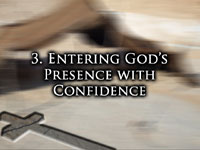 3. Entering God’s Presence with Confidence
3. Entering God’s Presence with Confidence
Skilled workers fashioned an ephod, a kind of vest with twelve precious stones for the high priest. This article of clothing had very powerful symbolism. Each of the stones was to have the name of one of the twelve tribes of Israel on it. Clothing often had a connotation of putting on character or being representative of something important. Turn with me to Exodus 28: 29 "Whenever Aaron enters the Holy Place, he will bear the names of the sons of Israel over his heart on the breast piece of decision as a continuing memorial before the LORD. 30 Also put the Urim and the Thummim in the breast piece, so they may be over Aaron's heart whenever he enters the presence of the LORD. Thus Aaron will always bear the means of making decisions for the Israelites over his heart before the LORD.” He was to carry the names of his people on his heart!
Do you understand that today we are all priest? Do you have any idea how much we need the prayers of each other? There are some people in this room who may never have someone to pray for them.
What’s up with this Urim and Thummim in the breast piece? We don’t know exactly what these were but I know that we all need help in making decisions. We all want to know the future and see what is going to happen next. People love to read fortune cookies. There are people who work will hard to predict the future like weathermen and women. Others make up predictions about the future out of thin air like psychics, astrologers and stockbrokers! (I Sam. 28:26: Saul tried to use them for inside information) There were tangible objects to get the priests to seek God for wisdom before making decisions.
Wouldn’t it be great to have something like that? Anyone here every make a stupid decision? We have the Holy Spirit. The bible says if you lack wisdom ask of God.
Everyday the Israelites could see the tabernacle and know that God was with them but one day was very important. Turn to Leviticus 16:29, "This is to be a lasting ordinance for you: On the tenth day of the seventh month you must deny yourselves [b] and not do any work—whether native-born or an alien living among you- 30 because on this day atonement will be made for you, to cleanse you. Then, before the LORD, you will be clean from all your sins. 31 It is a Sabbath of rest, and you must deny yourselves; it is a lasting ordinance.”
On this day the whole community came to a stop. Nobody worked. Nobody ate. On this day alone, the Most Holy Place was entered. Can you imagine all the people standing around the tabernacle on this day? Some of them are praying, some are crying. Some of them are explaining to their children what’s happening. The priest is cleansing himself first and then he makes an appeal for the whole nation.
What kinds of things would he be making atonement for? The same kinds of things we deal with today. Greedy people who have cheated others, people whose marriages are falling apart, people who struggle with sexual sin, parents who have short tempers with their children, people with every sin imaginable; they are all standing there and waiting.
They are full of wonder and anticipation. Will the priest survive the presence of God? Finally he comes out and he will do one more thing. Look at Leviticus 16:22, "When Aaron has finished making atonement for the Most Holy Place, the Tent of Meeting and the altar, he shall bring forward the live goat. 21 He is to lay both hands on the head of the live goat and confess over it all the wickedness and rebellion of the Israelites—all their sins—and put them on the goat's head. He shall send the goat away into the desert in the care of a man appointed for the task. 22 The goat will carry on itself all their sins to a solitary place; and the man shall release it in the desert.”
This was a shadow of things to come. Year by year and centuries pass and no one but the High Priest enters the Holy of Holies until one day.
I want us to look at two New Testament verses. The tabernacle was the beginning of God teaching us about the coming of Jesus, Immanuel, God with us. In the Gospel of John we read, “In the beginning was the Word, and Word was with God and the Word was God.” John 1:1. Later in the same chapter we discover that it was Jesus, “The Word became flesh and made His dwelling among us. We have seen His glory, the glory of the One and Only, who came from the Father, full of grace and truth.” John 1:14.
Any Jewish person of the first century recognized the word for ‘made His dwelling among us.’ As the word that meant Jesus “camped,” “tented,” or “tabernacles” with us. They would have made an immediate connection to the glory of God’s presence in the wilderness tabernacle.
Another New Testament connection in found in Hebrews 9 and 10. You need to read these verses sometime. These two chapters are all about the tabernacle. In Hebrews 10: 19-22 we read, “19Therefore, brothers, since we have confidence to enter the Most Holy Place by the blood of Jesus, 20by a new and living way opened for us through the curtain, that is, his body, 21and since we have a great priest over the house of God, 22let us draw near to God with a sincere heart in full assurance of faith, having our hearts sprinkled to cleanse us from a guilty conscience and having our bodies washed with pure water.”
The narrowing of a place: In the tabernacle God was saying, “I want to come and live with you.” I going to come to one camp, one courtyard, one tent and one box, that will be where I dwell.”
The narrowing of a people: God says, “Out of all the people on the earth I will come to one nation, one tribe – the tribe of Levi. One subset of priests, one man – the High Priest.
The narrowing of a time: God also says, “Out of the year I will choose one month, the tenth. Out of this month I will choose one week, one day and finally one moment.” That moment was when the High Priest laid his hands on the head of the goat.
God was preparing people for that one day when God would come and dwell among us. And the Word came and tabernacled among us. And the curtain was ripped from top to bottom extending the greatest invitation in all history: Come to God; the way is open.
We can enter the Most Holy place with confidence because of Jesus. Once again God is dwelling with His people. This time anyone can have access. Do you remember when Jesus died on the cross what happened at the moment of His death?
The veil in the tabernacle was torn in two, and the way to the Most Holy Place was opened for all. (Matthew 27:51; Mark 15:38)
What is the Most Holy Place today? It is here and now! Any place can be the dwelling of God. Anybody is welcome to come Any time in fine! In Christ there was a shift in the fabric of eternity from one place, one man and one moment to the reality in which we live – anybody, anytime, anywhere.
That’s why the Hebrew writer was so overwhelmed when he wrote these words, “Let us draw near to God with bold assurance.”
Where is the Most Holy Place? It could be in your living room. It could be at your desk at work tomorrow. It could be on your construction site or on your high school or college campus. The God who was present in Israel’s Most Holy Place can be present in all of His glory as you drive your car. Right here, right now you can tabernacle with God!
Let us prepare our hearts today as we connect with God in remembering His coming to dwell with us. He was born to die, to become the ultimate sacrifice for sin.
Communion
This sermon and series is based on material provided by J. Ortberg and the OTC series.